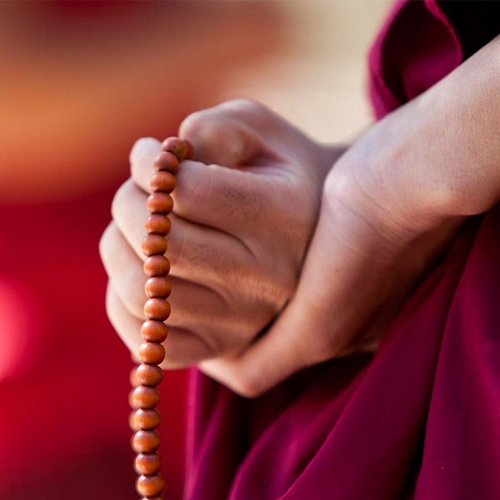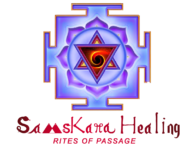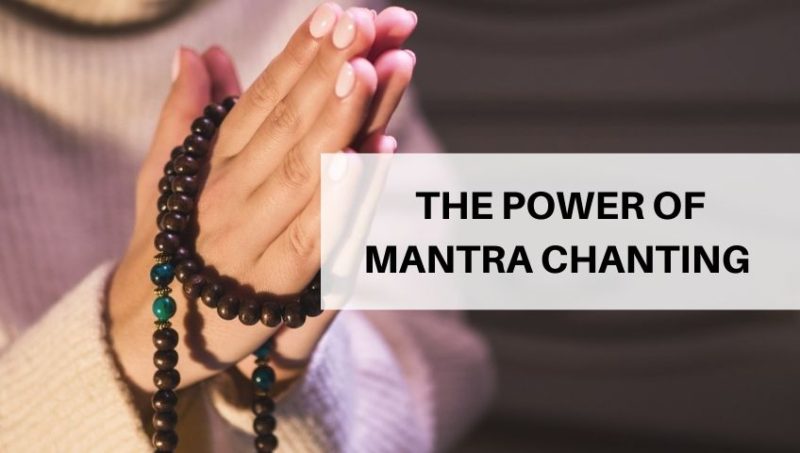THE POWER OF MANTRA CHANTING
Mantra is a sacred word that when chanted for a certain number of times creates a vibration in our energy field. Mantra, in Hinduism and Buddhism, a sacred utterance (syllable, word, or verse) that is considered to possess mystical or spiritual efficacy. … Various mantras are either spoken aloud or merely sounded internally in one’s thoughts, and they are either repeated continuously for some time or just sounded once.
As for its spiritual purpose, the mantra is said to quieten the habitual fluctuations of our consciousness and then steer consciousness toward its source in the Self. Mantras can also be seen as repetitive sounds used to penetrate the depths of the unconscious mind and adjust the vibration of all aspects of your being. Mantras are vibrated through chanting aloud, mental practice, or by listening to them.
Mantras have a lot of benefits, be it we chant it aloud or in our mind, the vibrations with the sound create vibrations within our physical body and energy field with that blocks are released and it calms your mind down relaxing your nerves. A lot of studies have been done to prove this point scientifically and there are clear indications of how mantras stop the mind chatter and keep us grounded and connected to the supreme consciousness.
Mantras have originated centuries back in the Vedas and are known to be sacred and pure. One needs to have a pure heart and intention before even starting to chant the mantra. Mantras are just not from Hinduism, we have it is in Buddhism, Jainism, Sikhism, Sufism, and Taoism.
Though in other religions they have holy words from Hebrew and other languages which can also be used as sacred chants. It is the sounds of these words that bring about the required energy shift to a person. Regular chanting of mantra brings about a positive shift to a person by releasing all toxins in the body and clearing negativity out of the system.
Depending on the situation one can chant a certain mantra and get those benefits onto them through regular chanting what is called mantra Jaap/ Japa. Jaap or Japa is chanting the mantra a certain number of times daily.
Reciting mantras has the ability to change the psyche, body, and soul. But, while chanting the mantras, it is always advisable to chant it 108 times. At times when in a hurry or unable to chant one chant it at least 9 or 18 or 21 times twice daily.

Chanting the mantra out loud also referred to as Vaikhara Japa. This practice allows the vibrations of the chanting to be felt in the physical body. Chanting the mantra silently but the lips and tongue still move, also referred to as Upamsy Japa. This is said to be 10,000 times more effective than Vaikhara Japa.
Each Mantra has its own benefits as is rated earlier and I am sharing some benefits here for your own knowledge and journey especially for those who are unaware of the importance of chanting a mantra or who think it is superstitious or these don’t work. Not that I have to prove myself here explaining, it is just informative for those who would be interested.
OM GUM GANAPATAYE NAMAHA
Om Gam Ganapataye Namaha is a powerful prayer and mantra comprised of four parts that are all in praise of the Hindu god, Lord Ganesha. Om Gam Ganapataye Namaha can be translated as “My salutations to Lord Ganesha.”
Om – is thought to constitute the divine in the form of sound. It is the universal sound where its utterance is considered the sound of creation itself.
Gam – is a bija mantra, or the seed mantra, for Ganesha or Ganapati. These words are used interchangeably to indicate the same god in Hinduism.
Ganapataye – is actually the alternate name for Ganesha, which is Ganapati. The ending ‘aye’ indicates that something is for or to Ganapati.
Namaha – means salutations. This word is in most prayers and is also in the commonly used word “namaste”; which means my salutations to you.
OM NAMAH SHIVAYA
In a way, it means bowing down to your own self as Shiva resides in all as own consciousness. The mantra is said to be the five-syllable mantra, na ma si va ya;
na represents earth,
ma represents water,
si represents fire,
va represents air,
ya represents ether. …
Chanting of the mantra refines and cleans these components or parts of our being.

Gayatri Mantra
The Gayatri mantra is considered one of the most universal of all Hindu mantras, invoking the universal Brahman as the principle of knowledge and the illumination of the primordial Sun.
The meaning of the mantra is that,
Om = Brahma; The primordial sound of the Universe
bhur = embodiment of vital spiritual energy (pran)
bhuwah = destroyer of sufferings
swaha = realization of happiness
tat = that
savitur = bright like the sun
varenyam = choicest
bhargo = destroyer of sins
devasya = divine
dheemahi = may imbibe
dhiyo = intellect
yo = who
naha = our
prachodayat = may inspire
We meditate on the glory of the Creator;
Who has created the Universe;
Who is worthy of Worship;
Who is the embodiment of Knowledge and Light;
Who is the remover of Sin and Ignorance;
May He open our hearts and enlighten our Intellect.

Om Mani Padme hum
Om mani Padme Hum is an ancient Buddhist mantra. In English, this rhythmic chant literally translates to “Praise to the Jewel in the Lotus.”
Next to OM, om mani Padme hum is one of the most commonly chanted mantras. It’s comprised of four words, and those four melodic words.
There are a lot of different meanings and different opinions on what each syllable means. Generally, each syllable represents one of the six goals of Buddhist existence and helps heal or purify and bring forth the positive qualities associated with that goal.
Let’s take a look at the meaning of each word in the mantra:
- Om = the vibration or sound of the universe; represents divine energy and generosity and purifies the ego
- Ma = represents ethics and purifies jealousy
- Ni = represents patience and purifies want or desire
- Pad = represents diligence and purifies ignorance and judgment
- Me = represents concentration and purifies attachment
- Hum = the unity of all; represents wisdom and purifies hatred
Oṃ Tāre Tuttāre Ture Svāhā / Om Tare Tuttare Ture Soha
Tara means “star” or “The one who ferries across”, or “She Who Saves”. Really, she represents compassion in action, since she’s in the process of stepping from her lotus throne in order to help the suffering beings. Tara’s name is said to derive from the verb meaning “to cross” or “to traverse” or “to get to the other side.” The word Tara also literally means “star.” Like a star she shines and helps us guide our lives in a safe direction. A third meaning of “tara” is “the pupil of the eye,” suggesting her as the watching presence, who watches over those who navigate the treacherous waters of life in search of the further shore of liberation.
OM represents Tara’s sacred and enlightened body, speech, and mind.
TARE means liberating from all discontent.
TUTTARE means liberating from the eight fears, the external dangers, and also from the internal dangers such as ignorance and delusions.
TURE means liberating from duality; it shows the true cessation of confusion.
SOHA means “may the meaning of the mantra take root in my mind.”
I have just shared a few mantras that can be chanted daily and there meanings. To know more about mantras or if you wish to make it a daily practice get in touch with us for guidance on the same. The science and knowledge is vast and writing these blogs really don’t really justify the true meaning or the intensity of the chants.
Reach out to Samskara Healing if you have an issue or trouble to let go of or for guidance, support or a session.
🌺Palash 🌺
Spiritual Healer @samskarahealing
Priestess|Shaman|Karunaki master
Reiki Master|Sacred symbols Master
Light Body Practioner|Meditation Facilitator
Lavender Flame Practitioner
ENHANCE-ENGAGE-BRING-PLETHORA-FLOCK-GIVE-Hot Cakes.




